




















JIM BROCK TRUCKING, INC.
JIM BROCK
660 4TH ST SW HURON, SD 57350
605-354-7437
jimbrocktrucking@gmail.com
SPONSORED BY:
JUSTIN LARSON, TRANSPORTATION INSURANCE SERVICES
HARKINS ENTERPRISES LLC/ ROADSIDE REPAIR

CHARLES HARKINS
209 N OAK STREET ST. LAWRENCE, SD 57373
605-481-8667
charlesharkins8667@gmail.com

SPONSORED BY: OAKLEY REPAIR
If you or your driver(s) have driven accident-free since May 21, 2022, YOU AND/OR THEY should compete in the SD TRUCK DRIVING CHAMPIONSHIPS.

COMPETITION CONSISTS OF THREE PARTS
- Written Exam - Pre Trip Inspection - Driving Course
SDTA’S EXECUTIVE COMMITTEE
BOB WILLEY, CHAIRMAN
JUSTIN ANDERS, VICE CHAIRMAN
TOM MURPHY, TREASURER
RYAN VIESSMAN, SECRETARY
JERRY OLLERICH, PAST CHAIRMAN
VACANT, ATA VICE PRESIDENT
CHRISTINE ERICKSON, PRESIDENT
SDTA’S BOARD OF DIRECTORS
JEFF BENNETT
STEVE BENNING
PHILLIP CHRISTIAN
DAVE DAILEY
SHANNA GRAY
PETE HALVERSON
ERIC HAMIEL
JEFF HANNAHS
STEVE HOFFMAN
LARRY KLAAHSEN
TIM KOTALIK
JUSTIN LARSON
CHRIS LUTICK

JIM MACIEJEWSKI

TIM MILLER
MATT PARKER
DAN SCHIPPER
BRETT SNOOZY
RYAN VIESSMAN
SDTA’S PAST CHAIRPERSONS
STAN ANDERS
LARRY ANDERSON
ROBERT APPELWICK
DAVID BULTSMA
TED BULTSMA
RICH BURNS
ROBERT CHRISTIAN
LYLE CLEMETSON
DARROLD DEAN
BERNARD FELDHAUS
DUANE FRIMAN
MIKE HABECK
RICK HOOGENDOORN
JERRY OLLERICH
ALTON PALMER
JEFF PARKER
GENE PHILLIPS
MICHELLE SCHIPPER
RANDY THOMPSON
CLIFFORD TJADEN
WAYNE VIESSMAN
STEPHEN WILLERS
Good day, ladies and gentlemen. We have just wrapped up with the Winter Board of Directors Meeting. We had a great attendance. Our meeting room was full and we had a lot to talk about.
We have come to realize that the growth and expansion of our association have been stagnant for several years. Now is the time for us to reinvent.
In meeting with Christine, we know she is committed to our industry and making sure we are sustainable long into the future. More to come on that.
Following our board meeting was the Legislative Reception and ice cream social. This event is held in conjunction with the SD Auto Dealers Association. We had great attendance from our members as well as from the legislators.
Christine and I are working on the 2023 Call on Washington. We have a variety of issues. Number one on my list is speed limiters. This is going to eventually be forced on the industry. We continuously have to have a seat at the table, or we will end up with something that is not feasible for this part of the country. We have several issues to address:
• Workforce Development: The Industry is facing a shortage of 78,000 drivers;
• Supply Chain Solutions: Inefficiencies within the supply chain predate the pandemic but were exacerbated by the supply chain crisis.;
• Energy and Environment: The Trucking Industry supports ambitious and achievable federal emissions standards developed in partnership with industry stakeholders.
• Lawsuit Abuse: Nefarious actors stage accidents and use unfair litigation tactics to make a profit at the expense of the trucking industry and highway safety. As a result, trucking companies are going out of business, and insurance rates are increasing at un sustainable levels.
If you have anything we need to carry forward, plesae contact me or the association office.
Bob Willey, SDTA Chairman
Bob Willey Trucking, Gettysburg, SD

SDTA STAFF:
CHRISTINE ERICKSON President cverickson@southdakotatrucking.com
PAM KOLSETH Comptroller pam@southdakotatrucking.com
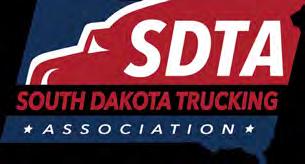
MICHELLE WELLS Executive Assistant michelle@southdakotatrucking.com

JAY STEENSMA Printshop Manager jay@southdakotatrucking.com
PATTY HINZ Office Assistant/Graphic Designer patty@southdakotatrucking.com
As you are aware, the 98th Legislative Session recently wrapped up. Perhaps to some of your surprise, I thoroughly enjoyed my first solo session on this side of the issues. Being a ‘recovered’ public official after ten years this side of it offers new challenges and changes.
This year, we took on a big issue in regards to warranty reimbursement. No single task is done on its own, and we want to thank all those involved who provided testimony, legal advice, numerous calls, and feedback on this bill to get it to the finish line.
Senate Bill 159 is a commonsense bill that helps further protect South Dakota consumers, dealers, and technicians from having to pay back for what they were told was a warrantable failure. Today’s warranty claims frequently exceed tens of thousands of dollars and could destroy the financial stability of many South Dakota families who were not expecting such a bill months after their vehicle’s work was completed. These denials/chargebacks have been occurring even after the dealer took all the correct steps to be reimbursed. Dealers outlay these warranty funds in good faith that they will be paid back for their costs and not have to forward unexpected chargeback costs from manufacturers to South Dakota consumers.
This bill now includes those manufacturers who make parts for major OEMs and provide their own separate warranties. Due to globalization, many parts are not made by the major OEMs. Some OEMs do not manufacture any parts and rely entirely on outside sources; they only assemble the vehicle. These parts are sourced through subcompanies of the OEM or from outside sources. Previously, these manufacturers/suppliers were not subject to, nor were they required to follow, any of the current South Dakota statutes because they provided their own warranties but did not create the certificate of origin, making them exempt from all South Dakota statutes. Because of this, they were not required to pay dealers for the parts and labor they had to perform, which made South Dakota consumers help pay for the warranty they advertise. By including these companies, consumers and dealers will be protected from being misled by suppliers that claim to have warranties only to discover that the manufacturer will only pay a percentage or not at all.
I received confirmation that the governor will be signing the bill on Monday, March 27 along with our two prime bill sponsors, Senator Erin Tobin and Representative Drew Peterson. As you know, this would not be possible without their leadership. Please thank them if you happen to see them.
House Bill 1035 was also approved, which is a $25 million appropriation that will update the computer system that is very outdated. This will allow us to help push forward electronic titling in the (hopefully) near future. With the most recent shortage of secure paper, we want to ensure business doesn’t stop moving forward or create any additional risk for you.
(continued on page 7)
To make money, your truck needs to be on the road, and the road isn’t always a comfortable place. The TriPac® Evolution APU turns your cab into a little slice of home, with virtually unlimited heating and cooling options and enough juice to power the devices that keep you entertained and connected. All while saving you big dollars on fuel and maintenance. See why drivers ask for TriPac Evolution by name at thermoking.com.


Randy Nolan, Johnson Feed, Inc., Canton, SD, was selected as the March 2023 Driver of the Month by the South Dakota Safety Management Council.

Randy is a true representative and definition of a professional driver. He does whatever is needed for operations. He is a “get ‘er done” kind of guy. Give him the information, and it’s considered done on time and without incident. Customers love him! If by chance he misses a round, they are calling to see if he is ok! In 12 years of service to the industry equals 1 minor backing accident backing a trailer in a tight warehouse parking lot and rubbed against another company’s trailer. No damage was repaired to either unit. He always brings a positive attitude to annual safety meetings and competing his required quarterly safety reviews. Randy recently received a new company truck. JFI management got a call from their shop manager stating his old truck, when turned in, was spotless. There was not a single thing the shop has to do to that truck, but to turn it over to the next owner. He maintains his truck no matter what time of the year it is. By all accounts, Randy Nolan is a driver truly deserving of this great honor. Randy and his wife Mary reside in Nashua, Iowa. They are the parents of three adult children, Paul (37), Sarah (35) and Jennifer (27), and the grandparents of five, Bret (23), Keira (11), Wesley (9) and Kinsey (7).

The South Dakota Trucking Association joins the Safety Management Council in congratulating Randy Nolan for being selected as the March 2023 Driver of the Month.

Senate Bill 21 has also been passed and signed by the governor. As you know, SDTA welcomes the log haulers to our association. This bill would appropriate $500,000 to the Department of Agriculture and Natural Resources to establish a one-to-one cost-sharing program for the five counties in this state that have Black Hills National Forest System lands within their borders, allowing the counties to participate in the Black Hills National Forest Land and Resource Management Plan revision process. This bill is absolutely critical to our logging partners in the state of South Dakota. The Feds have continued to scale back what can be harvested each year, which has closed one mill with another not far behind if we can’t get factual data to show what our forest can handle and the positive impacts it makes to ensure we have a well-maintained forest. We have been in consultation with our friends out west who work for the Black Hills Forestry Association and played a part in getting this bill to the finish line.
Lastly, please see all the important dates to remember. We have our annual fishing event on May 12th in Chamberlain and our annual golf outing in Brandon on July 20th.
Onward,
or on page 35 of this publication.



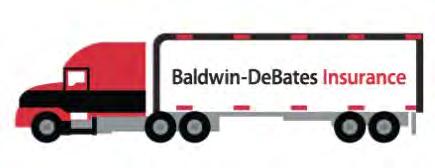
Fischer, Rounds & Associates
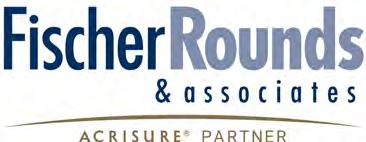
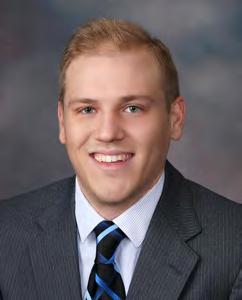
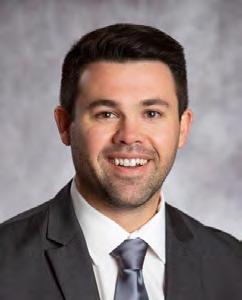


truck insurance consultants are experts in the coverage of all size trucks and farm equipment, so we know the risks and liabilities to make sure you are fully covered. We have four locations in South Dakota to serve you and your truck insurance needs—Pierre, Mitchell, Rapid City and Sioux Falls.
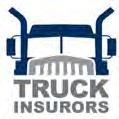

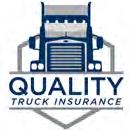


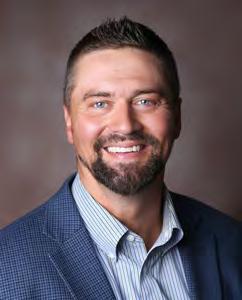


March 1, 2023 - Should you have the legal right to fix your own stuff? At first glance, the answer would seem like a simple “yes.” That simple answer is at the heart of the growing right to repair movement, a coalition comprised of repair enthusiasts and consumer advocates.
Yet, the right to repair movement is multifaceted and touches on a wide range of policy issues, from antitrust and copyright to environmental protection. Right to repair advocates claim that original equipment manufacturers (OEMs) hold a monopoly in the aftermarket for electronic device repair, which allows them to unfairly restrict the distribution of repair parts, tools, and documentation within proprietary authorized repair networks. Therefore, they argue, legislation is needed to require manufacturers to sell repair products to independent repair businesses outside of their own authorized networks.
While right to repair advocates insist that such measures will help consumers and the environment, the model legislation and current state right to repair bills threaten to break the existing repair market for electronics, leading to higher prices, lower quality products, and less innovation.
In June 2022, New York lawmakers passed the first right to repair law covering digital products, the Digital Fair Repair Act (S4104; A7006B), which would require electronic device manufacturers to sell and distribute diagnostic material, replacement parts, and repair tools to users and independent repair providers. New York Governor Kathy Hochul signed a modified version of the legislation on December 28, 2022.
The New York bill is premised on the Model State Right-to-Repair Law, entitled the “Digital Right to Repair Act.” Advocates have been pushing the model legislation for nearly a decade, and versions of the bill have been introduced in at least 43 different states, targeting various forms of digital equipment.
• Higher prices
• Lower quality devices
• Less water-resistant devices
• Less impact-resistant devices
• Technological lock-in and less innovation
• Decreased security
• Fewer safety features
• Harms small manufacturers
• Undermines property rights
Advocates claim that the legislation is necessary to restore people’s right to repair their electronic devices. However, consumers already have that right. Today, the market provides alternatives to OEMs’ authorized repair networks, and consumers choose to use those alternatives every day. The model legislation put forth by the Repair Association is a solution in search of a problem, and the harms of the proposals will outweigh any potential benefits.
The first part of this paper outlines three problems with the model Digital Right to Repair Act. Specifically, the legislation will:
• Raise prices for consumers;
• Disincentivize innovation; and
• Undermine property rights.
The second part of this paper debunks two claims often made by right to repair advocates, that:
• There is a monopoly in the repair after market; and
• Planned obsolescence is a significant obstacle to repair
Policy making is often viewed in a vacuum, disregarding unintended consequences that are likely to result. If people are poor,
increase the minimum wage. If something isn’t affordable, subsidize it. However, policy makers’ intentions don’t matter nearly as much as the incentives they create. And good intentions can often lead to bad incentives. That is certainly the case with right to repair legislation as it is being proposed. The claimed effectiveness of right to repair legislation is based on the assumption that there is a significant distinction between the markets for equipment and the aftermarkets for the service and repair of that equipment. Proponents of right to repair legislation overlook the possibility that government intervention in the aftermarket for repair services will ultimately lead to counterproductive effects in the manufacturing and sale of electronic goods.
Industries affected by repair mandates are likely to respond with product and manufacturing decisions that help maintain their bottom line. Moreover, government regulation also comes with compliance costs which will be passed on to consumers in the forms of higher prices, lower quality products, or both.
The Model State Right-to-Repair Law has two main provisions.
Section 3(a) requires electronic equipment manufacturers to sell documentation, parts, and tools used during the course of repair. It states:
For digital electronic equipment and parts for such equipment that are sold or used in this State, an original equipment manufacturer shall make available to any independent repair provider and owner of digital electronic equipment manufactured by or on behalf of, or sold by such original equipment manufacturer, on fair and reasonable terms, any documentation, parts, and tools, required for the diagnosis, maintenance, or repair of such digital electronic equipment and parts for such equipment, inclusive of any updates to information.
(continued on page 13)



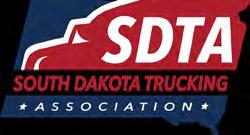


Section 3(b) requires manufacturers to provide disabling tools for embedded security locks to device owners or independent repair providers upon request. It states: For equipment that contains an electronic security lock or other securityrelated function, the original equipment manufacturer shall make available to any owner and independent repair provider, on fair and reasonable terms, any special documentation, tools, and parts needed to access and reset the lock or function when disabled in the course of diagnosis, maintenance, or repair of such equipment.
Some industry representatives have raised concerns over data security and cybersecurity regarding the mandates imposed by these provisions. The Security Industry Association (SIA) made this point in opposition to New Hampshire’s 2019 version of the Digital Fair Repair Act (H.B. 462). In a February 2019 letter from to the chair of the New Hampshire House Commerce and Consumer Affairs Committee, SIA Government Relations Manager Drake Jamali pointed out the wide array of devices that would be affected by the bill— including video cameras, carbon monoxide detectors, and fire alarms—and argued that the bill would force manufacturers to “release embedded software and security patches to independent repair providers which could compromise the cyber security of electronic equipment connected to an IP network.” Lawmakers should not overlook these security implications.
The legislation is expected to cut into manufacturers’ profits by decreasing revenue from their own repair services and lowering the volume of new units sold. One should expect manufacturers to raise prices on consumers to account for this profit loss.
The Digital Right to Repair Act requires manufacturers to sell and distribute documents, parts, and tools that may or may not be required during the course of device repair. For manufacturers, compliance with the legislation will bring increased manufacturing and production costs. Therefore, to comply with that mandate, manufacturers will need to establish systems and pro-
cesses to manufacture and distribute those repair products feasibly, efficiently, and profitably. That includes paying for costs involving research, design, development, and implementation of parts, documents, and delivery.
Further, the model legislation is likely to burden consumers with higher prices and lower quality devices as manufacturers react to the legislation’s mandates. A recent study published in the journal of Management Science found that attempts to make independent repair more accessible and less expensive, while well-intentioned, will likely have counterproductive effects. The authors conclude that right to repair bills “can create a lose-lose-lose situation that compromises manufacturer profit, reduces consumer surplus, and exacerbates the environmental impact.”
As the Management Science study notes, covered manufacturers are profit-maximizing firms, and right to repair legislation will likely prompt them to look for ways to mitigate profit loss. Any costs associated with complying with this mandate will likewise contribute to higher prices for consumers.
The model Digital Right to Repair Act threatens to limit product innovation across numerous areas of product manufacturing. The legislation necessarily implies electronic devices must be repairable. And the mandate to create a system to distribute repair tools, parts, and information could ultimately influence how manufacturers design their devices, leading to more standardization across product lines and less innovation. This, paired with the model legislation’s overly broad definition of “digital electronic equipment,” creates an applicable framework with no end in sight. It is important first to understand what kind of products will fall under the legislation’s purview. A major flaw of right to repair bills is their broad definition of “digital electronic equipment.” The model legislation defines such equipment as “any product that depends for its functioning, in whole or in part, on digital electronics embedded in or attached
to the product.” The primary intention is to target everyday consumer electronics, like cell phones, tablets, and personal computers. Proponents of the model legislation may also be interested in regulating the repair of other home electronics, like televisions and smart home devices. However, distinctly different industries, like home appliances, medical devices, and agricultural equipment have also been at the focus of advocacy as traditional products become more digital.
The first draft of the model legislation was inspired by a 2013 Massachusetts law that applied solely to motor vehicles, called the Act Protecting Motor Vehicle Owners and Small Businesses in Repairing Motor Vehicles. In September 2022 testimony before the House Small Business Committee, Repair Association Executive Director Gay Gordon-Byrne said that she essentially took out “automobile” in the Massachusetts law and replaced each instance with digital electronic product. The most current version of the model legislation, last updated in July 2022, and most of the versions introduced in state legislatures, contain an exception for motor vehicles.
Over 150 versions of the model legislation have been introduced in at least 43 state legislatures. A federal version, the Fair Repair Act (H.R. 4006; S. 3830), was introduced in June of 2021 during the 117th Congress. Perhaps the most notable variation among the introduced bills is in covered industries. Along with motor vehicles, many of the bills exclude medical devices. These exclusions vary in specificity, but most refer to medical devices as defined under the Food, Drug, and Cosmetic Act.
Many states have introduced more targeted bills directed at a single industry. Arkansas, Florida, Kansas, Michigan, Nebraska, New York, North Carolina, Oklahoma, Rhode Island, South Carolina, Vermont, and Wyoming have introduced versions of the model legislation that are directed solely at agricultural equipment. Other states, like California, Colorado, Hawaii, and Texas, have done the same with medical devices. In 2021 California lawmakers introduced the (continued on page 15)






Thank you to all who attended the 2023 Tri-State Safety Summit. We welcomed a record number of trucking professionals to learn, share, and focus on SAFETY! Attendees heard from national and regional experts on crash reduction research, marijuana’s impacts, FMCSA updates, legislative efforts, and law enforcement topics. During Monday’s breakouts, attendees shared experiences and knowledge with one another to help new and experienced safety professionals grow.
On Tuesday, attendees collaborated to identify top issues and brainstorm action steps to address these issues. The interactive event, led by Rebecca Brewster from ATRI, saw participants identify solutions for managing organizational conflict, improving driver quality, reducing distracted driving, and increasing truck parking.
Throughout the event, participants were able to visit with exhibitors to learn about the latest technology, health care options, and many other services. Thank you to our exhibitors and sponsors, your support and participation is vital to a successful event.


SO MUCH FUN WITH DUELING

Medical Device Right to Repair Act, which applies to “powered medical equipment.” Covered devices include those approved by the Food and Drug Administration that are “used in the treatment, monitoring, or diagnosis of a patient, and including assistive, adaptive, and rehabilitative devices.” Colorado lawmakers, taking a narrower approach to medical devices, passed the Consumer Wheelchair Repair Bill of Rights Act (H.B. 22-1031), which was signed into law in June of 2022. New York’s Digital Fair Repair Act is tailored more to consumer electronics, like smartphones, tablets, and personal computers.
The vast majority of the bills introduced use the broad definition of “digital electronic equipment” provided by the Repair Association’s model bill. Along with commonly owned consumer devices, the definition also applies to safety and security products like security cameras, carbon monoxide detectors, fire and smoke alarms, and alarm system panels. A wide array of products would fall under the model legislation: digital cameras, headphones, gaming consoles, printers, scanners, audio speakers, microphones, projectors, electric keyboards, instrument amplifiers, guitar tuners, coffee makers, microwaves, digital clocks, wrist watches, key fobs, baby monitors, landline telephones, barcode scanners, and ATMs. Various digital products, and many not yet in existence, will face chilled innovation under the Model State Right-to-Repair Law. Traditional products continue to become more digitized as manufacturers attempt to create new and better products to attract consumers. The overly board definition of “digital electronic equipment” may persuade some manufacturers not to digitize some products in order to avoid having to comply with the law. The U.S. Copyright Office made this point in a 2016 report on “Software-Enabled Consumer Products.” The report states:
If the law provides more expansive legal benefits for certain types of products or software, manufacturers may have an incentive to reengineer their products to fit
within those definitions. Conversely, if the law limits or eliminates legal benefits for other products or software, manufacturers may have an incentive to remove features benefiting consumers, or to add extraneous features that increase costs without providing corresponding benefits for the consumer. Creating these types of distinctions may discourage manufacturers from developing enhancements that could improve the efficiency of their products.
For example, take a common beauty appliance like a hair straightener—a product that has existed for over a century. The market size for hair straighteners, also called flat irons, is valued at over half a billion dollars. Due to the high temperatures required for them to function, flat irons have been shown to be a significant cause of house fires. Manufacturers of hair straighteners have innovated in response by digitizing their products to include features that turn off these devices after a certain period of time of non-use, increasing user safety.
The potential of falling under a right to repair law could unnecessarily influence manufacturers to opt not to digitize their products. This is particularly true for small businesses, because smaller manufacturers may lack the capital and resources to both create innovative digital products and produce adequate repair documentation for distribution. Small manufacturers may decide to limit or eliminate digital features in new products for fear of potential fines or litigation.
The Digital Right to Repair Act could further influence manufacturers to limit innovation and standardize their products to more easily comply with the law. The Computing Technology Industry Association (CompTIA) made this point in its September 2019 comments to the Federal Trade Commission’s “Nixing the Fix: A Workshop on Repair Restrictions.” In the comments, CompTIA’s Dileep Srihari and Alexi Madon note that the “demand for thinner and lighter devices has led to new, innovative, and lightweight designs,” and that “powerful functions are performed by ultra-thin devices where the
battery is adhered to the product casing.” Under similar right to repair proposals, “a manufacturer may be required to revisit such designs because of long-term repair or liability.”
In fact, battery replacements have become a contentious issue within the right to repair debate. Case Western Reserve University Law Professor Aaron Perzanowski points out: Even worse, device makers can simply glue components together rather than use screws or other fasteners. Glue often makes it difficult to replace a single component without removing or damaging others. Some components, like batteries, are naturally less durable and more prone to failure than others. When firms design their products in ways that complicate the procedure for replacing these predictable points of failure, they increase the cost of repair.
The use of glue and adhesives have become commonplace in the construction of smartphones in response to consumer demand for more water resistant devices. While the use of sealants has created additional complexities in the repair of devices, these designs function to “resist the intrusion of dust and water into the internal electronics.” Thus, manufacturers are faced with a trade-off: construct tightly sealed electronic devices to increase resistance to water and moisture, or construct devices with more easily replaceable batteries. Overemphasizing repairability could in turn make devices more prone to damage from drops and exposure to moisture.
The Digital Right to Repair Act threatens to chill innovation, as manufacturers modify product design to better comply with mandates on the distribution of repair materials in an economically efficient way. Marissa MacAneney, now a litigation associate at the law firm of Debevoise & Plimpton, wrote in her student note for the St. John’s Law Review that “Consumer demand, creative vision, and business considerations should (continued on page 17)


 3 Bay Truck Wash - One Bay Designated For Wash Outs On Reefers and Hoppers
3 Bay Truck Wash - One Bay Designated For Wash Outs On Reefers and Hoppers
drive which new products enter the free market, not rigid and arcane repairability legislation.” The repairability of a particular digital product is just one consideration that consumers make when purchasing a device. The free market, not poor attempts at state central planning, should inform how best to design these products.
At first glance, the meaning behind “right to repair” may seem obvious. According the Repair Association:
It’s simple. You bought it, you should own it. Period.
You should have the right to use it, modify it, and repair it whenever, wherever, and however you want. It’s our mission to make sure you can. We fight for your right to fix.
Simple.
Property rights are important. Often discussed as a “bundle of sticks,” property rights come in different forms, like the right to use or the right to exclude. A recurring problem in property law is discerning where one’s property rights end and another’s begins. As the old saying goes, your right to swing your arms ends at my nose.
The model right to repair legislation implicates two important property rights: intellectual property and the freedom of contract. Right to repair legislation forces manufacturers to reveal trade secrets and implicates copyright protections afforded by federal law. It also would impost compulsory contracts between manufacturers and independent repair shops, forcing manufacturers to sell and distribute their private property.
Recent scholarship has pointed to right to repair bills’ incompatibility with federal copyright law. As Devlin Hartline and Adam Mossoff of the Hudson Institute put it, “state laws that conflict with federal copyright law are unconstitutional under the American system of federalism.” Hartline and Mossoff point to “mixed signals” given by right to
repair advocates in addressing their legislation’s inconsistency with copyright law. Yet, proponents of the model bills also tend to frame copyright as an unnecessary hurdle for repair.
Much of the discussion on copyright within the right to repair debate focuses on the Digital Millennium Copyright Act of 1998 (DMCA), a law meant to modernize copyright law to better adapt to an increasingly digitized economy. Section 1201 of DMCA prohibits the circumvention of digital security controls that prevent access to certain copyright protected works on the device. But the DMCA also allows the Register of Copyrights to grant exceptions every three years. In 2010, an exception was granted for “jailbreaking” smartphones, a process that allows users to sideload unauthorized applications onto their device. In 2014, the jailbreaking exception was also granted to tablets and smart TVs. But the prohibition on “unlocking” security measures that control access to copyrighted works remains. Regardless of how one views the public good of the protections and process provided by the DMCA, the Digital Right to Repair Act’s requirement to distribute documents and tools to bypass electronic security locks is clearly inconsistent with federal law. And there is doubt as to whether the mandate is necessary for ordinary repair needs. In light of DMCA exceptions already granted for diagnosis and repair, the Federal Trade Commission’s report on the right to repair concluded that “at present, the assertion of IP rights does not appear to be a significant impediment to independent repair.”
The model right to repair law undermines manufacturers’ freedom of contract by forcing them to sell repair products to independent repair providers, regardless of whether a given shop has a history of bad service, poor data protection, or mishandling of intellectual property.
The distinction between positive and negative rights provides a useful lens through which to view these provisions in the context of the model legislation. Negative rights are those normally understood to involve
the freedom from external constraints or impediments, like freedom of speech, the right to bear arms, and the protection from unreasonable searches and seizures. Positive rights involve freedoms to which one is entitled, such as universal health care or public education and correspond to positive obligations. The right to health care obliges the state to provide funding to supply the goods and services to which that right implies access. It also often involves the state forcing private persons to enter into contracts to satisfy those obligations. This is not to say that all positive rights and obligations are bad. A company might provide roadside assistance services in which it voluntarily enters into a contract to take on the positive obligation to assist with a flat tire or dead battery in exchange for payment. The key distinction is whether a positive obligation is voluntary or coerced. Right to repair proponents often frame their advocacy as a negative right: “let us fix our stuff.” But right to repair model legislation seeks to establish positive rights, in that it would give independent repair shops compelled access to manufacturers’ private property. While the right to repair movement masquerades as a property rights movement, it adopts a philosophy of “property rights for me but not for thee.”
One would hope that ham-fisted attempts to interfere in the aftermarket for repairs would be supplemented by significant evidence and economic reasoning. However, this isn’t the case. To the contrary, existing data and information points to a thriving aftermarket repair economy that benefits manufacturers, small businesses, and consumers.
Right to repair advocates claim that there is a monopoly in the market for electronic repair. Nathan Proctor, (continued on page 19)

U.S. PIRG’s Right to Repair campaign director, wrote back in 2018 that, “The main goal is to end a monopoly that manufacturers currently enjoy over the repair of electronics.” These are essentially antitrust concerns, and the claims ultimately lack supporting evidence.
The electronic repair industry is comprised of several, often overlapping, markets for different devices. The cell phone repair industry is estimated to be worth $4 billion, with over 9,000 businesses. The demand for phone repair rose exponentially after Apple released the first iPhone in 2007, which likely explains why many electronic repair businesses—iFixit, uBreakiFix, and iCracked—were parodically named after Apple products. And the industry is expected to continue its growth. The electronic and computer repair industry is currently estimated to be worth $20 billion, with over 48,000 businesses in the U.S.
According to an April 2021 report by the consulting firm IBISWorld, the cell phone repair industry is highly fragmented, with smaller businesses controlling most of it. A 2021 survey by Consumer Reports—which favors right to repair legislation—found that not only do non-OEM repair solutions exist, but that consumers continue to choose to use them. Regarding smartphones, the survey found that consumers utilize a variety of different outlets to repair their devices.

Consumer Report’s data on small and large home appliances paints a similarly competitive picture:
Repair Location Self-repair; or repair by friend or
The increasingly digitized economy has created small businesses. This is particularly true in hardware repair, which has low barriers to entry.
Some of the big names in independent repair began as small startups. A.J. Forsythe, a 29- year-old psychology major, started iCracked in 2010 in his Cal Poly dorm room. His company topped $25 million in revenue after four years. He sold his company to Allstate in 2019. Justin Wetherill, 21-yearold accounting student, and a cofounder started uBreakiFix in 2009. The company expanded to 47 stores with $27 million in revenue after three years, and now has 262 stores with nearly $100 million in sales. Luke Soules and Kyle Weins founded iFixit in 2003. Their company makes 90 percent of its revenue selling parts and tools for repair
and distributes repair guides. In July 2022, iFixit announced a $24.2 million investment to establish a new east coast hub in Chattanooga, Tennessee. There is no discernable monopoly in the aftermarket for electronic repair. Manufacturers, authorized repair shops, independent repair shops, and other businesses operate in a highly competitive industry that has created tremendous value for consumers.
Another claim made by right to repair advocates involves the concept of “planned obsolescence.” Planned obsolescence is used to describe intentional design features by manufacturers to shorten the lifecycle of a product for the purpose of pushing users to purchase new products. New York Assemblymember Patricia Fahy, a sponsor of New York’s Digital Fair Repair Act, said in June 2022, “So many of us have stacks of iPads or laptops or desktops in our basement because they’re not worth fixing because of the planned obsolescence so this really breaks the monopoly.” The phrase has become a rallying cry for right to repair advocates, but the criticism ignores the cause of most electronic repairs: human error.
More often than not, users damage their devices due to mishandling before they become technologically obsolete. Smartphones are the most commonly owned electronic device in the U.S. and the one most affected by model right to repair bills. A 2021 report by the repair company uBreakiFix found that cracked and scratched screens are the most common damage incurred by smartphones by far. Damaged screens accounted for 56 percent of damaged smartphones. Two smartphone screens are cracked every second in the U.S., according to the report, and about 95 million smartphones are damaged by drops and falls every year. For laptop computers, falls and liquid spills are also the leading causes of damage.

The uBreakiFix report also found that users who previously damaged their smartphone are twice as likely to do so in the future. Additionally, emerging research has presented another reason people break their smartphones: a new device is released. Two published studies, one in the Journal of Marketing Research and another in the Management Science journal, found that users are more likely to lose or break their device when a new model is available. This suggests that consumers are more eager to replace their smartphone than right to repair advocates tend to acknowledge. And the findings coincide with the uBreakiFix report, which found that 59 percent of people would rather upgrade to a new device than have their old device repaired.
Right to repair advocates claim that consumers are unable to repair their electronics. In actuality, most consumers would
simply prefer to upgrade and purchase a new device. The vast majority of consumers are content with the lifespan of their smartphone—73 percent, according to Consumer Report’s 2021 national survey.
“Planned obsolescence,” as invoked by right to repair advocates, is a misnomer because consumers are far more likely to physically damage their devices before obsolescence. Even so, to the extent that planned obsolescence does affect a group of consumers, scholarly research has found that such product failures impact future customer purchasing behavior. In other words, manufacturers lose out on repeat customers.
Companies like uBreakiFix, iFixit, and hundreds of other independent repair businesses already provide repair services, parts, tools, and manuals. The proliferation of high-end digital products has created
demand for affordable repair services, insurance, and protective cases. And the free market works to meet that demand.
The Repair Association’s Model State Rightto-Repair Act ignores the realities of the electronic repair industry. Digital electronic products have become so affordable that repairs are often not economically convenient. This is not a problem, but a free market success.


Unnecessary government intervention in a thriving market should be avoided. Legislative proposals based off the model bill would do more harm than good by increasing prices for consumers, lowering the quality of devices, stifling innovation, and eroding property rights.
BROUGHT TO YOU BY:

























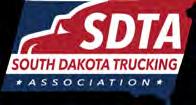


800.228.8602 gwccnet.com
We understand you are in business to make a profit. Our Value-Driven® Company modules can help you reduce losses and increase profits by focusing on influencing employee behavior, changing culture, improving communication, and managing risk successfully.
We believe it is everyone’s job to do what they can to prevent losses. We have developed a variety of training tools to help get all employees involved in safety. From seminars and webinars to Self-Service e-Tools and FAQs, we have solutions to fit your operations.
We see “Critical Crashes” as a risk to your company. Our Value-Driven® Driving program focuses on helping drivers do what they can to prevent these types of accidents: rear-end, loss of control, lane change, and run under. All of our driver training programs are FREE to our insureds and can be accessed 24/7 on Great West’s Online Learning Library.
GREAT WEST CASUALTY COMPANY – No matter where the road takes you, you will discover that at Great West, The Difference is Service®


gross weight of 19,500 pounds or a gross combined weight of 33,000 pounds.
The duty is applied on the first sale of the heavy-duty truck, truck trailer or semitrailer chassis and body, for which the motor carrier purchaser is responsible—ultimately increasing the cost of goods for trucking companies, brands and consumers across the board.
Implemented in 1917, the Federal Excise Tax (FET) has increased from 3% upon its inception to 12%. The ATD, ATA and ZETA argue the tax creates a barrier to investing in cleaner, safet trucks and equipment available on the market.
Photo
A group of transportation and trucking stakeholders calling on Congress to repeal a World War I-era tax on heavy-duty trucks says the measure disproportionately burdens small businesses and dampens demand for electric vehicles (EVs).
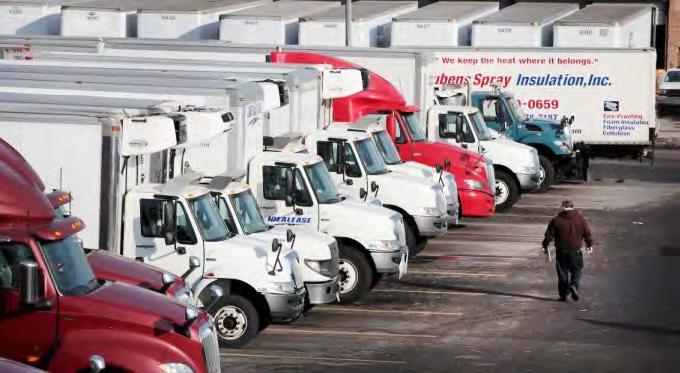
In a joint letter to Congress dated Feb. 22, the American Trucking Associations (ATA), the American Truck Dealers (ATD) and the Zero Emission Transportation Association (ZETA), voiced their displeasure with the Federal Excise Tax (FET), a tax on heavy-duty commercial vehicles that was established in 1917 to help cover the costs of World War I. Calling the tax an “outdated” revenue source, the trucking associations noted that the tax has increased from 3 percent when it was first instituted to 12 percent today, hampering investments in cleaner, safer trucks and equipment.
The coalition argues that adding a 12 percent tariff on the cost of a new truck disincentives trucking fleets small and large from modernizing their equipment and replacing older tractors with new, low-emission power units.
“If Congress is serious about safety, the environment and jobs, then repealing the FET should be front-burner,” said ATA president and CEO Chris Spear in a statement. “It’s time to shelve this World War I-era tax and start putting the best equipment on our roads.”
Charred train cars sit near railroad tracks on Feb. 14, 2023 in East Palestine, Ohio. The Norfolk Southern train derailed on Feb. 3, releasing toxic fumes and forcing evacuation of residents.
The tax applies to vehicles with a gross weight of 33,000 pounds, with trailers of 26,000 pounds, or tractors with a
Although the rising availability of low-emission and zero-emission options should eventually cut the base price for these vehicles, the tax can add more than $50,000 to the cost of the latest low- or zero-emission vehicle, making these investments cost-prohibitive for smaller fleets, the coalition argues. Over 90 percent of U.S. motor carriers operate six or fewer trucks.
“The regressive nature of the FET makes it disproportionately hard for these small businesses, many of which are familyowned and operated, to purchase new equipment,” the letter said. “Larger fleet operators take longer to modernize their vehicles due to price increases from the onerous excise tax.” The added $50,000 tax burden would amount to more than twice the price of internal combustion engine trucks, according to a study of zero-emission trucks by the International Council on Clean Transportation.
“The federal government wants heavy-duty trucks to be cleaner or emission free, but slaps a 12 percent tax on the newest, greenest trucks,” said Scott McCandless, ATD chairman and president of McCandless Truck Center LLC. “If the goal is to reduce emissions, repealing the counterproductive FET is a good place to start.”
The three parties that joined forces to pen the letter have a major stake in the future of the trucking industry, and are significantly impacted by how the government sets monetary policy related to intermodal transportation.
The ATA is the largest national trade association for the trucking industry, linking 50 affiliated state trucking associations and industry-related conferences and councils. Meanwhile, the ATD is a division of the National Automobile Dealers Association (NADA) and represents more than 1,800 franchised medium- and heavy-duty truck dealers holding nearly 3,000 separate franchises, across domestic and import. Franchised truck dealers are directly responsible for more than 144,000 U.S. jobs.

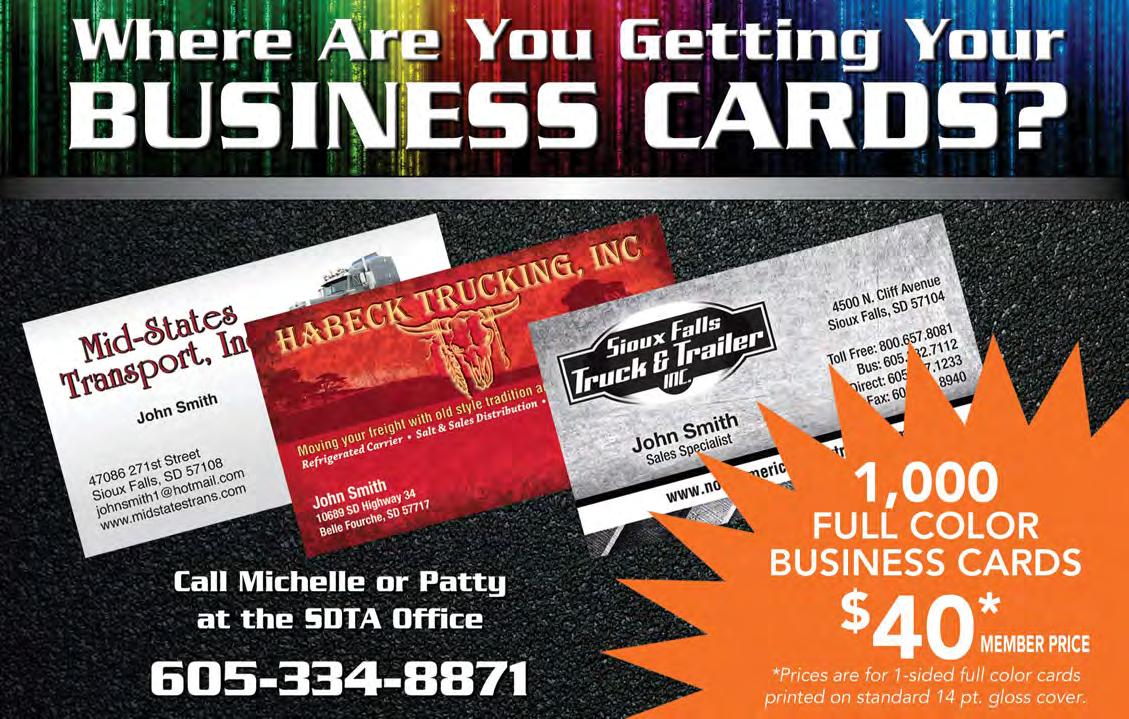
APRIL 18 - 20, 2023
Call on Washington
Washington, D.C.
MAY 11, 2023
SDTA Spring/Summer Executive Committee Meeting
10:00 a.m.
AmericInn
Chamberlain, SD
MAY 11, 2023
SDTA Spring/Summer Board of Directors Meeting
1:00 p.m.
AmericInn Chamberlain, SD
MAY 11, 2023
Social Hour, Dinner and Calcutta for the Annual Cliff Tjaden Fishing Event
6:00 p.m.
AmericInn Chamberlain, SD
MAY 12, 2023
Annual Cliff Tjaden Fishing Event
7:30 a.m. - 3:30 p.m.
Cedar Shore Resort
Oacoma, SD
MAY 20, 2023
SD Truck Driving Championships
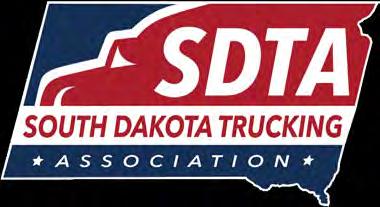
7:00 a.m.
Southeast Technical College
Sioux Falls, SD
JUNE 1 - 4, 2023
Wheel Jam
State Fairgrounds
Huron, SD
JULY 20, 2023
SDTA East River Golf Event
9:00 a.m.
Brandon Golf Course
Brandon, SD
AUGUST 16 - 19, 2023
National Truck Driving Championships
Columbus, OH
SEPTEMBER 10 - 16, 2023

National Truck Driver
Appreciation Week
SEPTEMBER 13 - 15, 2023
SDTA 88th Annual Convention
Ramkota Hotel & Conference Center
Sioux Falls, SD
NOVEMBER 9, 2023
SDTA Annual Pheasant Hunt
8:00 a.m.
Meet at Hutch’s Cafe
Presho, SD
NOVEMBER 10, 2023
SDTA Fall Executive Committee Meeting
8:00 a.m.
AmericInn
Fort Pierre, SD
NOVEMBER 10, 2023
SDTA Fall Board of Directors Meeting
10:00 a.m.
AmericInn
Fort Pierre, SD
DECEMBER 6, 2023
West River Legislative Reception
5:30 p.m. - 7:00 p.m.
Minervas, Lincoln Room
Rapid City, SD
DECEMBER 12, 2023
NextGen Reception
4:30 p.m.
East River Legislative Reception
5:30 p.m. - 7:00 p.m.
Minervas
Sioux Falls, SD
FEBRUARY 12, 2024
Annual Legislative Reception and Sundae Bar
6:00 p.m.
Ramkota Hotel & Conference Center
Pierre, SD
FEBRUARY 13, 2024
SDTA Winter Executive Committee Meeting
10:00 a.m.
Ramkota Hotel & Conference Center
Pierre, SD
FEBRUARY 13, 2024
SDTA Winter Board of Directors Meeting
12:30 p.m.
Ramkota Hotel & Conference Center
Pierre, SD
We offer high-quality, low-cost CDL training options in the South Dakota region that are available online from any device. Our curriculum is fully compliant with the current FMCSA ELDT Training standards, and we are a member in good standing of the Training Provider Registry as a Theory provider.

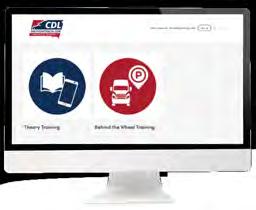

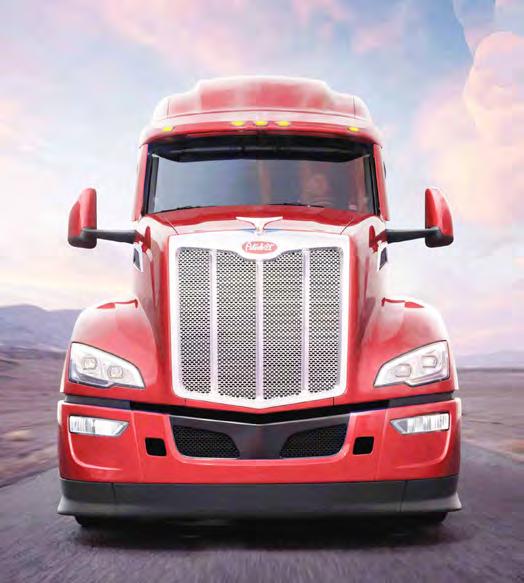
To learn about our fully-online, FMCSA-compliant CDL Theory program and how you can join our trainee to employee pipeline, call the SDTA office at 605.334.8871 or go to www.southdakotatrucking.com

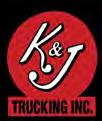

K&J was honored to be named a Best Fleet to Drive for in 2022, as well as a Fleet to Watch in 2021, which was their first year participating in the competition. Being included again in the Top 20 list is an exciting national acknowledgement of their continued commitment to excellence on behalf of their drivers.
To be considered, companies had to first be nominated by one of their drivers (company drivers or owner operators). Extensive evaluations were then performed across a variety of categories including company culture, total compensation, benefits, safety practices, equipment training, performance management, professional development, career path/advancement opportunities, and other intangibles.
For the second year in a row, we are thrilled to announce that K&J Trucking has earned the prestigious distinction of being named one of North America's Top 20 Best Fleets to Drive For!
Determined by The Truckload Carriers Association (TCA) and CarriersEdge, this award is the only annual program dedicated to uncovering the best workplaces in the North American trucking industry. 2023 marks the 15th anniversary of the program.
Staff representatives from each nominated company were required to participate in an extensive interview about their company’s programming. In addition, driver surveys were conducted to solicit input from those working directly with the fleets. Then the team at Best Fleets discusses the results and names the top 20 (made up of the 10 small carriers and top 10 large carriers) in North America.
ZETA’s role is relevant to today’s move away from fossil fuel dependency, as the federal coalition is focused on advocating for 100 percent EV sales by 2030. The association is committed to enacting policies that drive EV adoption, create hundreds of thousands of jobs, secure American global EV manufacturing leadership, drastically improve public health and significantly reduce carbon pollution.
“The federal excise tax harms American truckers and fleet operators by inflating the cost of heavy-duty trucks and limiting access to the many economic and public health benefits that come with transportation electrification,” said Albert Gore, executive director at ZETA. “Medium and heavy-duty trucks account for 24 percent of all transportation carbon emissions in the United States but represent only 4 percent of vehicles on the road. It is time to accelerate our movement towards modernized transportation
fleets, and we must enable our nation’s fleet operators and truckers to join in this effort.”
The organizations aren’t alone in fighting to scrap the FET, with allies in Congress long seeking to repeal the centuryold charge.
A bipartisan bill introduced in the U.S. House of Representatives by Reps. Chris Pappas (D-N.H.) and Doug LaMalfa (R-Calif.). last June called the Modern, Clean, and Safe Trucks Act of 2022 would repeal the FET on heavy-duty vehicles. A similar Senate bill was introduced last year by Sen. Todd Young (R-Ind.) and Sen. Ben Cardin (D-Md.). Neither bill has advanced through the legislature.
Various bills to repeal the FET on trucks have been introduced each year since at least 2017.



Date Jacket Size
Name of Driver Age
Marital Status
Residence
Address (in full)
Children & Ages
Name of Carrier
Home Terminal
Address (in full)
Phone Number
Spouse Name
Years Employed by Present Employer Total Years of Experience
Type of Equipment Operated: r Truck r Tractor-Semitrailer r Doubles r Other Type of Driving: r Over the Road r City r Other
Total Mileage
Mileage with Present Employer
# of Accidents: Chargeable Dates: Non-Chargeable Dates:
Has your drier ever been selected as a Driver of the Month or Driver of the Year in South Dakota or any other state? r Yes r No If yes, when?
Participation in truck driving championships or other transportation related activities:
Basis of Nomination:
With this entry, company agrees to send their driver, if selected as Driver of the Month, to the South Dakota Trucking Association Annual Convention where the driver will participate in a personal interview. Drivers not being interviewed will not be eligible for the Driver of the Year honors. Interview times will be scheduled Friday afternoon during the convention. With this entry, the company agrees to submit Driver of the Year Entry Form for National Competition if your driver is selected as the South Dakota Driver of the Year.
Submitted by: Title:
RULES:
Driver may be nominated for Driver of the Month for any outstanding act of heroism, a contribution to highway safety, an extraordinary act of courtesy, an exceptional deed or act of service to mankind within the community reflecting positively on the motor carrier industry, or for a long period of safe and courteous driving. An outstanding act shall be deemed to mean unusual or other than the normal every day courtesies afforded by truck drivers.
ELIGIBILITY:
1. The nominated driver must be an employee of a member in good standing of the South Dakota Trucking Association.
2. The nominated driver must have been an employee by the present employer for at least two years and have a minimum of five years overall experience.
3. South Dakota domiciled* drivers are eligible for nomination for an outstanding act performed in any state. * The intent of the word “domiciled” shall be interpreted to mean: Any driver reporting to or regularly dispatched from a terminal within the state of SD (in keeping with the Federal Motor Carrier Safety Regulations definition of his/her home terminal) regardless of where the driver may dwell.
4. A driver may receive the Driver of the Month award only one time in any contest year. He/she may be renominated in any subsequent year.
5. Nominations for outstanding acts on the highway shall be accompanied by supporting evidence (letters, statements, news clippings, etc.).
A clear, factual account is absolutely necessary. Vague generalizations will not be accepted.
6. A copy of recent driver motor vehicle record check must accompany the nomination.
7. Drivers nominated and not selected as Driver of the Month will be held over and used in the following month’s selection.
8. Entries must be in the SDTA office no later than the 10th of each month for that current month’s contest.
9. Nominations may be made by any party, but must be approved by the employer or a representative of the employer.
10. The annual contest will run from September of the previous year through August of the current year.
11. Company agrees to submit a professional head and shoulders photo of the winning driver. Remit to: SDTA
PO Box 89008, Sioux Falls, SD 57109-9008
The Clearinghouse will now notify employers if there is a change to a driver’s Clearinghouse record up to 12 months following a driver query.
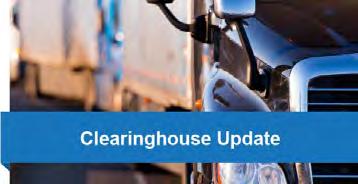
Previously, after conducting a pre-employment query, an employer received a notification from the Clearinghouse if there was a change to that driver’s Clearinghouse record within 30 days. FMCSA has expanded employer notifications, as explained below.
As of March 8, 2023, an employer will be notified via email when a driver they have queried has new information recorded in their Clearinghouse record within 12 months of a pre-employment or annual query. The Query History will also be updated to reflect when new information is available, as illustrated in the screenshot below.

Note that new information in a Clearinghouse record may include changes such as an update in return-to-duty status, a removed violation, or a new violation. A full follow-on query is needed to determine if the new information results in the driver having a “Prohibited” Clearinghouse status. The employer should complete a full follow-on query, which requires the driver’s specific consent, within 24 hours to determine if the new information prohibits the driver from performing safety-sensitive functions, such as operating a commercial motor vehicle (CMV).
If the employer uses the “Send Consent Request” prompt on the Query History screen, they will not be charged for the follow-on query. The follow-on query will also satisfy the employer’s annual query requirement, and employers will receive notifications of changes to the driver’s record within 12 months of a follow-on query. For more details, see these new and
updated frequently asked questions which are on the Clearinghouse website:

How is an employer notified of changes to a driver’s Clearinghouse record?
What actions should an employer take if notified of a change to a driver’s Clearinghouse record? Which Clearinghouse users are notified when there is a change to a driver’s Clearinghouse record?
What is the annual requirement for employee queries and how is it tracked?
Are you up to date on your annual queries?
Log in to the Clearinghouse and visit your Query History page to see if your annual queries are due. For instructions on conducting annual queries, download the How to Conduct a Limited Query job aid.
https://clearinghouse.fmcsa.dot.gov
Frequently Asked Questions at https://clearinghouse.fmcsa.dot.gov/FAQ
Change is nature. But itʼs in our nature to uphold what matters most: helping those who put themselves out there for ones they love. That isnʼt changing.
With more than three decades proven track record of assisting trucking companies with all the challenges of their back office, Aladdin can be the difference in your company succeeding or failing. We take pride in the success of every customer we have, regardless of how big or small they are. Let us help you every mile down the road with any of the following services:


• Safety & compliance
• IRP/IFTA licensing & reporting
• Authority setup
• Truck insurance
• Fuel discounts
• 2290/permits
• Equipment leasing & financing
• Factoring

Get in touch with us at (605) 332-5802 or visit aladdincap.com for more details.
This new look gives us, and the people we care about a stronger sense of direction—which is important out on the road.
Thanks for sticking by us through this exciting new phase. We couldn’t do it without you.





Congratulations to Mark Sneve who retires in April 2023 with 30 years in the trucking industry.
He started as a Technician in 1983, for Allstate Utility. Then in 1985, when Allstate left town, Jim Hawk Truck Trailers, Inc., bought that location.

He worked for Jim Hawk Truck Trailers, Inc., as Shop Foreman until 1993 when he took over as Service Manager, a position he held until 2020.

At that time, he was considering retirement, when Crossroads Trailer made him an offer he couldn't turn down. As the Service Writer / Estimator for Crossroads Trailer, he is officially retiring in April 2023.

Mark and his wife Kelley, have been married since 1981. They have 3 children and 5 grandchildren.
Pete and Jessie Halverson, owners of Thermo King of Sioux Falls, invited Representative Dusty Johnson on site March 16th, for a tour of their facility. He learned a lot about Thermo King and the refrigerated transport industry.






EXECUTIVE COMMITTEE
BOB WILLEY, CHAIRMAN BOB WILLEY TRUCKING
JUSTIN ANDERS, VICE CHAIRMAN ANDERS
TOM MURPHY, TREASURER K&J TRUCKING, INC
RYAN VIESSMAN, SECRETARY (NEXTGEN) CLIFF VIESSMAN TRUCKING, INC.
JERRY OLLERICH, PAST CHAIRMAN
VACANT, ATA VICE PRESIDENT




